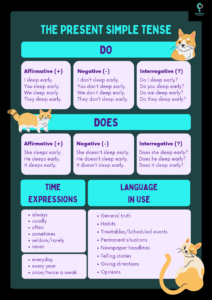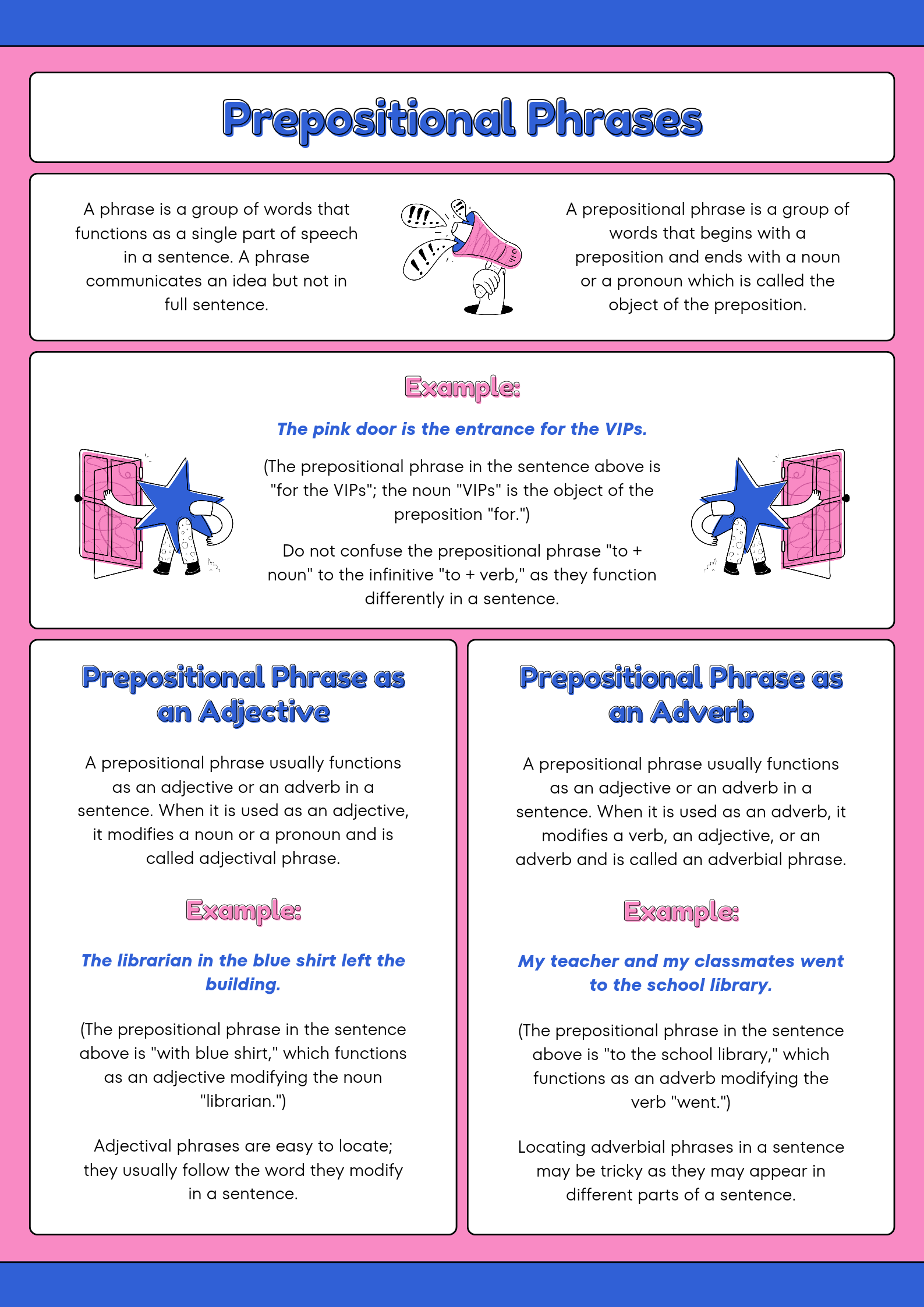
The Present Simple Tense is one of the most fundamental tenses in English grammar. It is primarily used to express actions that are habitual, general truths, or situations that are permanently true. This blog post will delve into the rules, usage, and structure of the Present Simple tense, with examples provided in various forms: affirmative, negative, and interrogative.
1. Basic Structure of Present Simple Tense
- Affirmative Sentences:
- These sentences state a fact or habitual action.
- For ‘Do’:
- Examples: “I sleep early.”, “You sleep early.”, “We sleep early.”, “They sleep early.”
- For ‘Does’:
- Examples: “He sleeps early.”, “She sleeps early.”, “It sleeps early.”
- Negative Sentences:
- These sentences negate a fact or habitual action.
- For ‘Do not/Don’t’:
- Examples: “I don’t sleep early.”, “You don’t sleep early.”, “We don’t sleep early.”, “They don’t sleep early.”
- For ‘Does not/Doesn’t’:
- Examples: “He doesn’t sleep early.”, “She doesn’t sleep early.”, “It doesn’t sleep early.”
- Interrogative Sentences:
- These sentences ask questions about a fact or habitual action.
- For ‘Do’:
- Examples: “Do I sleep early?”, “Do you sleep early?”, “Do we sleep early?”, “Do they sleep early?”
- For ‘Does’:
- Examples: “Does he sleep early?”, “Does she sleep early?”, “Does it sleep early?”
2. Time Expressions Used with Present Simple Tense
The Present Simple tense is often accompanied by certain time expressions that indicate the frequency of the action or event. These include:
- Always
- Usually
- Often
- Sometimes
- Seldom/Rarely
- Never
- Everyday
- Every year
- Once/Twice a week
These time expressions help in identifying how often an action occurs.
3. Language in Use: Contexts for Present Simple Tense
The Present Simple tense is versatile and can be used in various contexts. Here are some of the most common situations where the Present Simple tense is employed:
- General Truth: Expressing facts that are always true.
- Example: “The sun rises in the east.”
- Habits: Actions that happen regularly.
- Example: “She reads the newspaper every morning.”
- Timetables/Scheduled Events: Used to indicate scheduled events in the future.
- Example: “The train leaves at 6 p.m.”
- Permanent Situations: Describing situations that are unchanging or constant.
- Example: “He works as a doctor.”
- Newspaper Headlines: Often written in Present Simple to indicate immediacy.
- Example: “President meets with world leaders.”
- Telling Stories: Sometimes used in narratives for immediacy.
- Example: “So, he opens the door and sees…”
- Giving Directions: Present Simple is commonly used in instructions.
- Example: “You turn left at the corner.”
- Opinions: Stating beliefs or feelings.
- Example: “I think she is right.”
4. Key Rules for Using Present Simple Tense
- Subject-Verb Agreement: In the Present Simple tense, the verb changes depending on the subject. For third-person singular subjects (he, she, it), an -s or -es is added to the base form of the verb.
- Example: “He writes (not write) a letter every day.”
- Negative Form: To form the negative, use “do not” (don’t) or “does not” (doesn’t) before the base form of the verb.
- Example: “They don’t go to school on Sundays.”
- Interrogative Form: In questions, “do” or “does” is placed at the beginning of the sentence before the subject.
- Example: “Does she play tennis?”
5. Common Mistakes to Avoid
- Forgetting the ‘s’ in third-person singular: It’s a common mistake to forget to add the ‘s’ or ‘es’ in the third person singular form.
- Incorrect: “She walk to school.”
- Correct: “She walks to school.”
- Confusing ‘Do’ and ‘Does’: Remember to use “does” for he, she, it, and “do” for I, you, we, they.
- Incorrect: “Do she like apples?”
- Correct: “Does she like apples?”
By understanding and applying these rules and examples, mastering the Present Simple tense becomes much easier. The infographic provided is an excellent visual aid that summarizes these points for quick reference.
